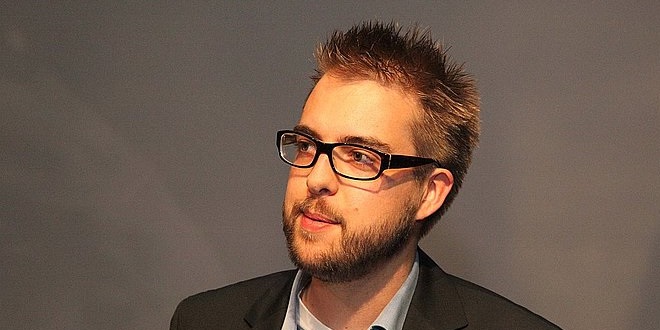
by tomnora | Feb 2, 2022 | startup CEO
excerpt from HACKING THE CORE
From all the topics I just listed, I hope to ingrain one thought in particular into your head: Software is a Metaphor. This will be covered more in book 2 but is also all over this book.
Most product innovations now come from software, which is a bunch of letters and symbols arranged in very specific ways. Manipulation of software, code, and scripts has become one of the most important parts of innovation of most things in this world. Everything runs on software.
Almost any product we use today is driven by software, from our car to our phone to our TV to the local coffee shop, and of course the web is layers and net- works of software packages. Many things you interact with are visual software ele- ments on a screen: animation, art, medical diagrams, and 3D models.

Therefore, this book will often draw from the world of software and software architectures, the web, and general computing to draw parallels about business, in- novation, and logical thinking. Don’t worry, I’ll make these ideas easily accessible.

by tomnora | Aug 26, 2014 | Angel Investor, Drupal, founder, PHP, Revenue Growth, SaaS, Scalability, startup, startup CEO, venture
As further market proof of the power of Drupal in the enterprise, Acquia has received about $100 million in funding in the past 3 months, which puts its valuation at over $1 billion.
http://j.mp/nora-acquia
There’s a lot of buzz about the Amazon acquisition of TWITCH this week. As a personal friend of the original investor, I’m very happy for this transaction – after 7 years of work, repositioning, and sticking to it their vision has paid off. But that’s a different article…
Less prominent in the news, but possibly more important, is Amazon’s investment in ACQUIA. Acquia, Inc. is the for-profit company founded by Dries Buytaert, the inventor of Drupal, to support his open source project. Drupal was launched in 2001, and Acquia started in 2007. When Open Source software projects are launched, the progenitors often start a for-profit sister company to garner some income from training, support and consulting. Because they are open source. the original products can’t generate revenue, so when these OS projects occassionally blow up into phenomenons like Drupal and WordPress have over the past few years, it’s gratifying but also quite frustrating to watch others derive so much value from your baby while you toil away to lead its growth with no financial return. Plus, there are tons of expenses like servers, bandwidth, office space, travel and the time of many professionals.
Red Hat was one of the first of these types of companies bridging open source with big finance, leveraging Linux support into a profitable business, also leveraging the enterprise. They kind of invented this business model. Sun Microsystems and others almost made it happen, but they were only semi-free. Google has optimized this open source to freemium model in almost all of its products.
But Drupal has succeeded way beyond it’s original expectations. It was originally started as a college dorm project, where many of the best products on the web seem to hatch. It gained recognition during the 2004 presidential campaign when Howard Dean’s IT director decided to use it as a platform for community and campaigning. After that it quickly gained credibility and spread throughout government, and corporate America.
Drupal is now driving some of the largest and most critical websites in the world, including The White House, The Oscars, Twitter, Mercedes Benz, Warner Music Group, The Louvre Museum, The City of Los Angeles and Stanford University. Over its 13 year life the web has vastly changed from primarily static pages to dynamic database driven automated (“rendered”) web page serving, which Drupal excels at. The average website size has also greatly increased, aided by automated rendering systems like Drupal and others. The term Content Management System has become mainstream in everything from the Fortune 500 to small businesses.
Some of Drupal’s success has come from luck, but most of it has been because of strategy and excellent timing. Dries has carefully pushed the technology not to the bleeding edge, but towards the modern edge where enterprises are comfortable. He and his team have avoided many temptations to try new fads, make big changes and try to grow faster. Currently they face enormous pressure to innovate faster, and are responding with Drupal 8, which will incorporate many new modern web architectures previously not part of the Drupal platform.
Acquia has been critical in supporting, guiding, enhancing and positioning Drupal for the past 7 years. It was a startup that launched with funding from day one and has never looked back.
Amazon’s motivation in buying into Acquia is a bit more self serving. Acuia provides premium, high security, supported hosting to it’s customers, which all runs on top of Amazon AWS. Amazon can see that some of AWS most robust and challenging work comes from Acquia with Drupal. For example, Acquia runs its Drupal infrastructure on more than 8,000 AWS instances and serves more than 27 billion hits a month (or 333TB of bandwidth). Amazon has a strategic value beyond many other companies or VCs in their investment.
What will come next? Will Amazon try to acquire all of Acquia before the inevitable IPO? I think we can bet on that.
This is a very contemplative time for Buytaert – he has fierily protected Drupal’s independence and strategic positioning, taking risks but protecting his large customers from drama, can he keep Amazon and Bezos at bay? I have no doubt he will, for he is a true “Startup CEO”, even though his title is CTO at Acquia.
@tomnora
more info on the funding round from @thewhir http://j.mp/nora-acquia

by tomnora | Aug 6, 2014 | Business Development, CEO Succession, early stage, founder, Revenue Growth, Scalability, startup, Tom Nora, venture
“Creativity takes courage.” –Henri Matisse
This is one of my favorite quotes about innovation, by an innovator who is still revered 100 years later; it’s the first thing you’ll see if you go to my personal website http://tomnora.com/ . Matisse was an amazing innovator, and his innovation and originality
Innovation, Originality, Creativity – why are these things so important in the tech startup world? And what do they have to do with art or painting?
I have the opportunity to visit many secondary and tertiary startup markets in my travels, meaning not Silicon Valley or New York, and one of the things that always strikes me is the lack of originality in almost every company pitch I see or hear.
I can see that the entrepreneurs I meet are sincere, have usually put a ton of work and pride ion their invention or product. Often they have put a fair amount of personal or family capital into the venture (these days that’s usually their parents money).
The major flaws in their planning process are denial and ego fortification – they don’t do enough homework to see how many are already doing something similar because they don’t really want to know; and they highly overrate themselves as amazing entrepreneurs. This is a bad combination for success, but I see it daily.
I get it; I know it’s more difficult than ever to build a real career and easier than ever to start a company. But the very core of creating an interesting and new business should be the concept of originality. Some originality, enough to be different, unique, without being too weird.
Real originality comes from within, because it is inspired, comes from adrenaline and emotion, not from a spreadsheet or desire to merely make money. Finding the mid point between originality and capitalism is what I define as business innovation.
There’s nothing new under the sun, so you must critically modify, hack, or turn sideways existing systems with a truly new vision. Instead of just copying or slightly modifying something you see, try to take it a few steps further.
One of the quite innovative methods Matisse and his peers used was finding inspiration from other skills they already knew, leveraging their expertise as craftsmen. Matisse was a draftsman, a printmaker and a sculptor, and you can see these influences in his paintings.
Part of the magic of great business innovations is knowing which rules to break. Matisse broke some of the rules, but kept many intact. The rules about the way business processes flow are too often just accepted, but if you can analyze them, find an achilles heel, then innovate a better answer. Get rid of the obsolete rules without breaking the good ones, and great things will happen. It’s about where to hack and where not to.
I went to a pitch fest in one of those secondary markets the other day. Most of the presentations were weak delivery, boring, been done before and uninspiring. But there was one that was pretty amazing, by an 18 year old who had become deaf at 12. He has developed an exercise system for handicapped people; you tell by his excitement and thought process that he was inspired, and created true innovation. He wasn’t polluted by how corporations work or the rules of business – he was still in high school.
Another Matisse quote is “There are always flowers for those who want to see them.” Look carefully, take the extra time and find the uniqueness in any idea you want to realize – it’s there. Find me on twitter at @tomnora
by tomnora | Oct 18, 2013 | Angel Investor, CEO Succession, early stage, founder, Hawaii, PHP, SaaS, Scalability, startup CEO, Tom Nora, venture
http://t.co/LkQ7kDluf0
via 5Q03: Puneet Agarwal (True Ventures) on pitching investors, maker culture, and big trends he\’s watching. — The Orchestrate.io Blog.
via 5Q03: Puneet Agarwal (True Ventures) on pitching investors, maker culture, and big trends he’s watching. — The Orchestrate.io Blog.
by tomnora | Aug 18, 2013 | Angel Investor, Business Development, Hiring, Jobs, PHP, SaaS, Scalability, startup, startup CEO, Tom Nora, venture
Confessions of a Drupalvangelist
Anyone who’s been around me for the past 6-12 months has been inundated with my evangelism of eCommerce in general and Drupal + PHP. This is actually a bit strange for me, as a 20+ year software industry professional, I’ve spent most of my time in the world of extremely sophisticated software tools and languages – several of the startups I’ve worked at and/or launched were based on software tools to build software, so I’ve been in the middle earth of software for awhile.
The So Cal engineering gap? I’ve been able to study the Southern Cal software dev scene as an insider for over 2 years now. As a native LA person, I’m gratified to see so much code and code talk flying around my town. But, there is a serious gap in the discipline, number of developers and community around real software development here. Also lot’s of fake, wanna be CTOs here. (So L.A.) This imbalance keeps L.A. from catching up with Silicon Valley and New York as a stronger startup region. In my career I’ve seen many times the positive effect of a rich software development discipline, full life cycle, QE vs. QA, test driven development, all the “other” parts of SW dev.
The strongest impact on improving this situation is Silicon Valley and Seattle companies – Google, Facebook, Amazon, Microsoft and others are making enormous investments in building So Cal as a software town. They bring with them confidence, tools, brilliant people and believe it or not, Drupal and PHP.
Drupal has a worldwide engine of real software discipline. The So Cal Drupal scene is highly regarded and has several free meetings every week to teach advanced software life cycle issues. The Getty, USC, The Grammys, MTV, and many more giant websites built in L.A. are built on Drupal.
What is Drupal? Drupal works at all levels of software development. Drupal and PHP were tools I’ve acknowledged for a decade but never studied much. Then last year I decided to re-educate myself in software development, but this time as a regular ol’ coder. Although I have an EE and CS education, my best contribution to technology businesses has been in strategy/sales/marketing/leadership. I’ve had 7 jobs in Silicon Valley in software development companies, but 6 of the 7 were in business development.
When I dove into development with a focus on the future and e-commerce I quickly saw that Drupal and thereby PHP are taking over the scene. Sure you have Ruby, Python, many others, but PHP is winning because it’s so accessible to newbies, and it manipulates the server side continuously, allowing e-commerce, social, geolocation and other apps. Big boy applications.
The world has changed – software development, app dev, and software engineering are taking over the center of the conversation, and Drupal/PHP is taking over the lead. You can actually have a successful startup now with just developers, with just one (although I don’t recommend this), if they’re savvy and humble enough.
What is Drupal? Drupal is prevalent in the Silicon Valley ecosystem? In the birthplace of Java, BSD, SQL and many other critical software technologies, Drupal and PHP are spreading like a California wildfire. Drupal has recently permeated places like Stanford; there are over 1,000 sites on campus now. Ther are 20+ major Drupal dev shops up there, they have BAD Camp every year, one of the top Drupal camps in the world.
What is Drupal? Drupal can make a non-developer earn $60-100,000 per year within a year of study. A Drupal or PHP developer here can make from $50 to $200 per hour; I see it all the time. The problem in So Cal is that the discipline part is weak; we’re just not steeped in the cmplete range of what full cycle development, test, etc. are as a region. PHP and Drupal are partly at fault for this – people who never attended Engineering school can learn these tools in less than year without learning formal computer sciense discipline.
What is Drupal? Drupal is an overly friendly community of helpful people and ample free training and coaching. Drupal is also free open source software with functionality for every possible web application. When I moved back to L.A. in 2010, I gradually saw that among our weaknesses we were very strong in E-Commerce, Fashion Commerce, Mobile Commerce, Content Communities, dynamic sexy websites and it was all based on varieties of PHP/LAMP. Drupal’s weaknesses as a software language tool (push button programming, configuring, too easy, more IT than software dev) are actually its strengths. Even the best software hackers should hack less and use that time to build more functionality and usability.
What next?
1. Go to drupal.org, join up for free, find me there I’m tomn
And contact me if you want my help on anything Drupal or PHP…
[contact-form][contact-field label=’Name’ type=’name’ required=’1’/][contact-field label=’Email’ type=’email’ required=’1’/][contact-field label=’Website’ type=’url’/][contact-field label=’Comment’ type=’textarea’ required=’1’/][contact-field label=’Drupal or PHP experience’ type=’text’/][/contact-form]



